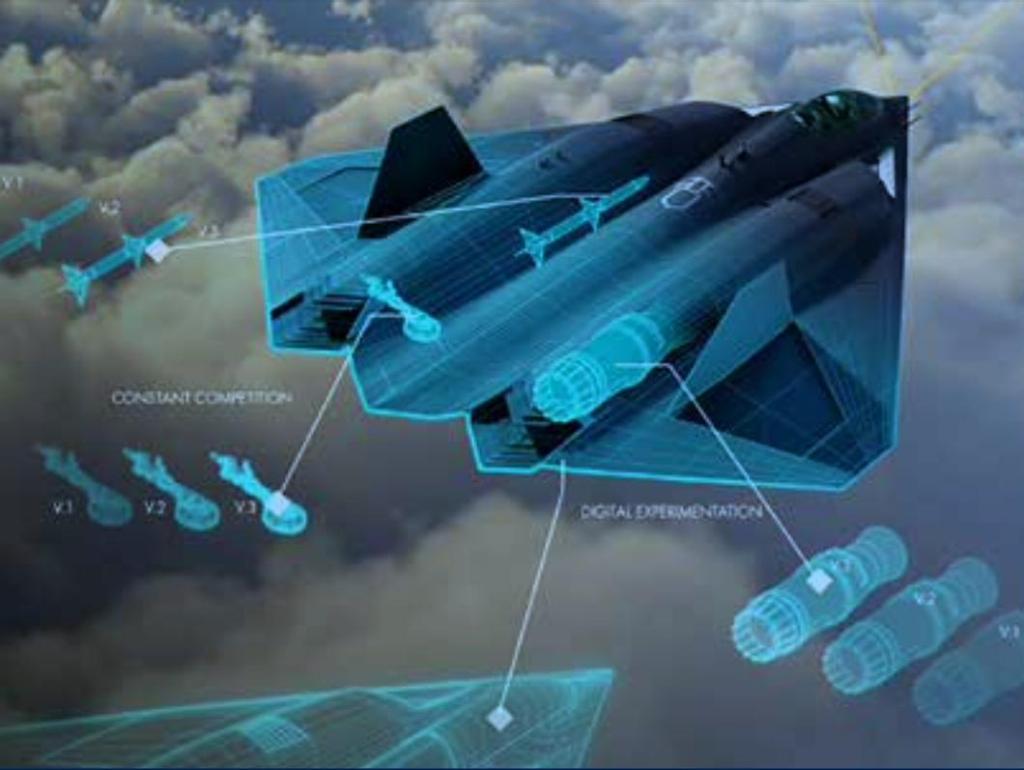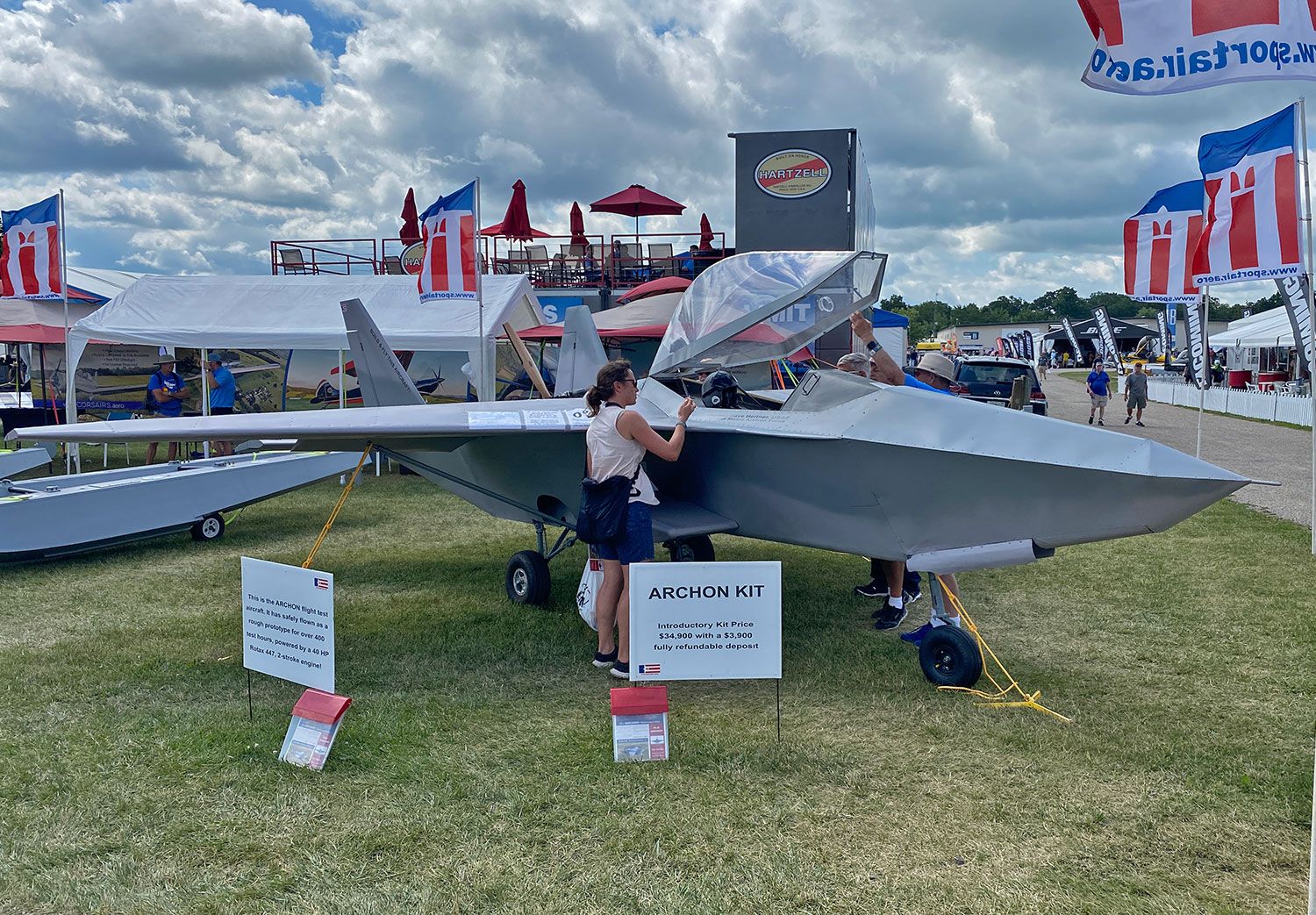Experimental Military Aircraft - For nearly 20 years, the United States Air Force has focused on counter-terrorism operations in undisputed airspace. As America shifts its focus from the war on terror to potential near-identical conflicts, the US wants to take a page out of its own World War II playbook by building low-cost fighter jets that can defeat advanced enemy air defenses. with pure numbers.
The Kratos XQ-58A Valkyrie, an unmanned experimental fighter, is difficult to detect on radar and could interface directly with the F-35 via an encrypted data link to serve as a pilot-controlled wing. But even with these advantages, the price of the Valkyrie, not its capabilities, could change American aerial warfare strategy.
Experimental Military Aircraft

While there is no doubt that the United States has the largest air force in the world in terms of the total number of military aircraft, the composition and size of that force has changed dramatically since the closing days of World War II. At that time, the US had approximately 300,000 combat aircraft. Today, the country has only about 13,400 of them, divided between various military branches.
Second Phase Of Light Attack Experiment Underway > Holloman Air Force Base > Article Display
The reason for this change is the constant advancement of technology, which has greatly increased combat capabilities
The cost of every aircraft in service today. This parallel development in aircraft production led not only to a leaner and more powerful air force, but also to a complete change in combat strategy. Gone is the World War II mentality that demanded superiority in scale. On today's battlefield, the biggest difference is the technology, not the numbers.
But the performance gap offered by the technology itself is difficult to maintain. As near-peer adversaries like China and Russia deploy more advanced air defense systems, US aircraft face the prospect of a more contentious battlefield than ever before. With US fighter jets costing more than $80 million each, whether they have stealth capabilities or not, any loss would really be felt in a full-scale conflict. Therefore, the strategic balance may swing back to a strength that depends on the sheer number of aircraft, rather than the amount of technology that can be crammed into each aircraft. And this is where the Kratos XQ-58A Valkyrie could really shine.
The Valkyrie carries an internal weapon load of at least two small-diameter bombs and has a range of over 2,000 miles, but more importantly, the Department of Defense (DoD) has a plan to hook up these unmanned combat aircraft. (UCAV) on the F-35 and the new F-15EX via encrypted data links to serve as support drones - an initiative known as the Skyborg Program. These connections, along with built-in artificial intelligence, allow manned aircraft pilots to control and even redirect their drone controllers to send sensor information back to the pilot.
Nord Gerfaut: France's Daring Delta Wing Research Aircraft
This means that Valkyries can attack ground targets on behalf of a manned fighter, possibly even sacrificing themselves to protect manned aircraft from incoming missiles.
"We can take risks with some systems to make others more secure," Will Roper, Ph.D., assistant secretary of the Air Force for acquisition, technology and logistics, told Defense News reporter Valerie Insinna last year.
Currently, fighter jets rely on their own sensor packages to identify targets and potential threats, but the Skyborg program would allow unmanned aerial vehicles to fly ahead to spot targets and send data back to pilots. This would allow combatants to take on threats from greater distances or avoid them all together.

“In the future we can separate them, put the sensors in front of the shooters, put our manned systems behind the unmanned systems. There's a whole playbook," Roper said
Military Aircraft Pictures
All of these capabilities come at a small cost (for fighter jets) of about $2 million per aircraft. When you consider that Raytheon's disposable Tomahawk cruise missiles cost about $1.4 million each and combat drones like the RQ-4 Global Hawk cost more than $120 million each, $2 million for a reusable fighter jet like Valkyrie is stolen.
The low price of the Valkyrie fits perfectly with the DoD concept of an "attractive aircraft" - aircraft so cheap to replace that commanders can take more risks with them without too much fear of losing them, as they would with a manned platform or even a high platform. dollars. drone. As Kratos points out, the Valkyrie also offers an "open architecture" that allows them to tailor the aircraft to different mission requirements with different payload options. This dramatically increases the number of mission types these drones can support, including air-to-air and air-to-ground strikes.
A move toward producing large numbers of these "attractive" platforms could greatly increase US Air Force capabilities by returning to massive power by range. This is important because despite how advanced air defense systems have become, they still have limited magazine capacity. By using swarms of drones, the US hopes to defeat defense systems, which is largely why the Air Force emphasizes the "accessible" part of its drone program.
"Swarming allows you to collect large numbers of cheap consumables that you can use to overwhelm your opponent," Paul Scharre of the Center for New American Security think tank told BBC News' Thomas McMullan last year. "This reverses a long-standing trend of rising aircraft costs and declining volumes."
Encyclopedia Of Usaf Aircraft & Missile Systems
However, unlike during World War II, the value of all these aircraft can be further increased through advanced data collection and by leveraging the capabilities of flying supercomputers such as Lockheed Martin's F-35 Joint Strike Fighter.
A decision on whether the Pentagon will continue mass production of the Valkyrie is expected to be made as early as 2021. (Since this is a new platform still in the testing phase, there's always the possibility that new issues will arise.) But either way, this decision makes it look like the future of air superiority will look a lot like the new Kratos drone.
As air defense matures, stealth won't be enough to dominate the airspace battle, and that's where good old-fashioned math may be the only way to victory. By sending more cheap drones to a target than the surrounding defenses can effectively deploy, Skyborg drones can guarantee victory even if stealth can't get the job done.
/https%3A%2F%2Ftf-cmsv2-smithsonianmag-media.s3.amazonaws.com%2Ffiler%2F1d%2F08%2F1d0843a9-5342-4da9-be70-17666c643a7a%2Fmar2020_b01_prologue.jpg)
With Russia and China reportedly developing their own "wingman" drones, the wars of the future could be won with overwhelming air defense systems featuring swarms of armed UCAVs modeled after nearby human pilots.
Nasa Armstrong Fact Sheet: Yf 12 Experimental Fighter Interceptor
Alex Hollings is the editor of the Sandboxx blog and a former US Marine who writes about defense policy and technology. He lives in Georgia with his wife and daughter.
Prince Harry once sent a fighter jet after his father. Can powerful lasers save the navy? How cheap drones replaced fighter jets in Ukraine. The UK and Poland will donate modern tanks to Ukraine
Iran turns cargo ship into aircraft carrier US to send Sea Sparrow missiles to Ukraine Navy to fire ballistics at 9,000 MPH Canada selects F-35 as next fighter jet
Is the AMX-10RC a tank or... something else? 13 Of The World's Most Terrifying Missiles The US Is Sending Bradley Combat Vehicles To Ukraine What It's Like To Live In A Hanga Plane The US Air Force has unveiled a conceptual image of its new fighter jet, which was designed, built and tested in secret.
Darpa Picks Experimental Vtol Plane
Last September, USAF Chief Acquisition Officer Will Roper told Defense News, “We have already built and flown a full flight demonstrator in the real world, and we have broken records. We are ready to build the next generation of aircraft in a way that has never happened before.”
The new aircraft, which is expected to replace the F-22, is part of the Next Generation Air Dominance (NGAD) program.
Little is known about the plane, but the Air Force just released a huge hint: concept art of the fighter jet being built under the NGAD program. The image appears in the USAF's recently released biennial acquisition report. Read the full report here.

A report on the program says: “The next generation of Air Dominance is a family of capabilities that enable Air Superiority in the most demanding operational environments by leveraging the development pillars of digital engineering, agile software development and open architectures. By implementing shorter technology development cycles, the program matures the technology and reduces risk through prototyping and operational experimentation.
Dh 115 Vampire T.35
“Next Generation Air Dominance, designed to complement the F-35, F-22, joint and partner forces in the Air Superiority role, is an advanced aircraft program to develop penetrating hostile air platforms with multi-domain awareness, agile and resilient communications, and an integrated family of capabilities.
“The program uses a non-traditional acquisition approach to avoid traditional monolithic program schedules and excessive lifecycle maintenance costs. This strategy, called the Digital Century Series approach, creates a realistic business case for the industry to adopt commercial best practices for key design activities – even before the part is produced.”
The image also hints at the ability to transform the plane with weapons and propulsion upgrades. The aircraft is visible alongside three variants of air-to-air missiles, undercarriage and engines with the marking
Experimental aircraft led lights, experimental aircraft financing, eaa experimental aircraft association, experimental aircraft instruments, military experimental aircraft, experimental aircraft insurance, autopilot for experimental aircraft, us military experimental aircraft, experimental aircraft association, experimental aircraft association solidworks, avionics for experimental aircraft, experimental aircraft loans
0 Comments